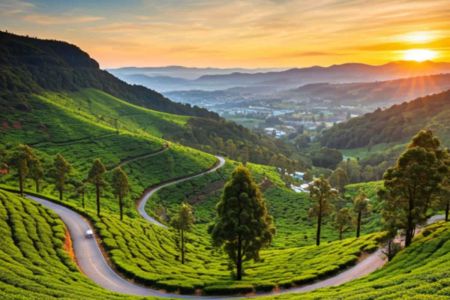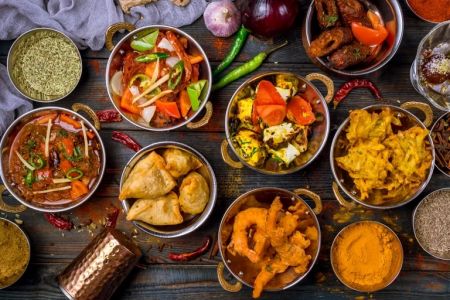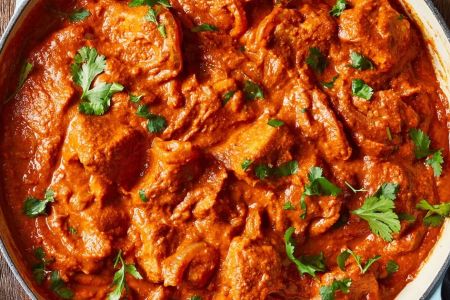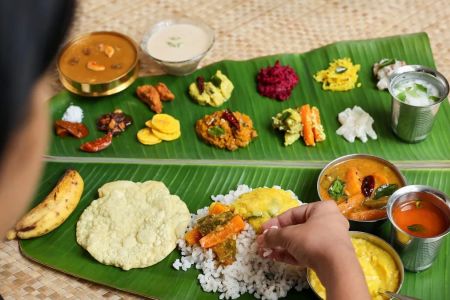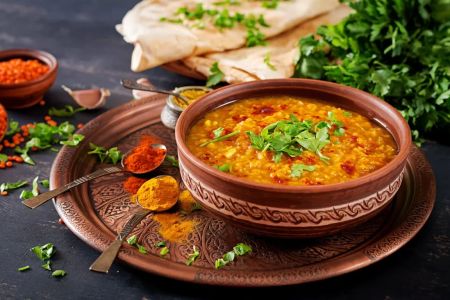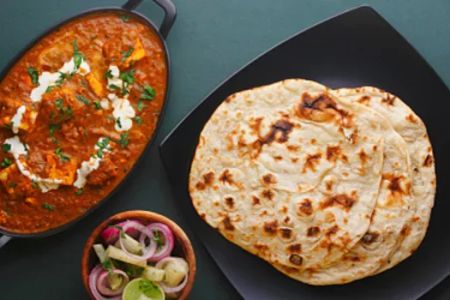Indian Food Culture and Its Regional Diversity – A Delicious Journey Across India
1. North Indian Food: Rich and Flavorful
The food culture of Northern India is known for its rich and creamy dishes, featuring a blend of spices and flavors that vary from region to region. Dishes like butter chicken and dal makhani are famous worldwide. The cuisine here is influenced by Mughal and Punjabi traditions, and wheat-based breads like naan and roti are staples in the daily diet.
One of the standout features of North Indian food is the use of dairy products such as yogurt, ghee, and paneer, which enrich the dishes and add creaminess. You can't visit Delhi, for example, without trying its famous street food, chole bhature, or the delicious parathas from Amritsar.
2. South Indian Food: Spicy and Tangy
When traveling to Southern India, you'll encounter a completely different food culture that emphasizes rice, coconut, and a variety of spices. The cuisine of this region is known for its tangy flavors, as seen in dishes like sambar and rasam. Dosa, a crispy pancake made from fermented rice and lentil batter, is a popular dish across South India, especially in Tamil Nadu and Karnataka.
The use of coconut oil and fresh coconut in cooking adds a distinctive flavor to many dishes. In Kerala, you’ll find an abundance of seafood, often prepared with a mix of fresh spices and coconut milk. Southern Indian food is not only known for its spices but also for its diversity in cooking methods, which include steaming, frying, and slow cooking.
3. West Indian Food: Sweet and Savory
The food culture of Western India is characterized by its use of both sweet and savory elements. Maharashtra, Gujarat, and Rajasthan have distinct flavors, with Gujarat being particularly known for its sweet and sour dishes. Gujarati thali is a wholesome meal served on a platter, featuring a balance of sweet, salty, and spicy dishes.
Rajasthan’s food is traditionally rich and hearty, with dishes like dal baati churma offering a combination of lentils, bread, and a sweet dessert. Maharashtrian cuisine, on the other hand, is known for its spicier side, with dishes like pav bhaji and vada pav dominating the streets of Mumbai.
4. East Indian Food: Delicate and Subtle
Eastern India, particularly West Bengal, Odisha, and Assam, offers a unique cuisine that is delicate yet flavorful. Fish is a staple in many East Indian dishes, especially in West Bengal, where it’s often cooked in mustard oil and paired with rice. Shorshe Ilish, a famous Bengali dish made with hilsa fish and mustard paste, is a must-try for seafood lovers.
The cuisine in this region also highlights the use of less spice compared to other parts of India, focusing on the freshness of ingredients and the subtle use of spices. The tea culture in Assam also stands out, with its world-renowned Assam tea enjoyed with a variety of snacks.
5. Indian Food Experience: A Traveler's Story
During my travels through India, I was fortunate enough to explore the food culture from region to region, and every new place I visited added a new layer of excitement to my journey. One of my most memorable food experiences was in Jaipur, Rajasthan, where I attended a traditional Rajasthani feast at a royal palace. The flavors were bold and complex, with a rich use of spices, ghee, and dried fruits. I also got the chance to try laal maas, a fiery lamb curry that left me both exhilarated and exhausted!
For those planning a culinary tour of India, it’s crucial to try regional specialties. From the street food stalls in Delhi to the seafood markets in Kerala, the diverse flavors of India will keep your taste buds dancing. If you're looking to truly immerse yourself in the food culture, take part in a cooking class or food tour to learn about the ingredients and techniques that make Indian food so special.
Looking to experience the diverse Indian food culture firsthand? Visit Travel India One to plan your culinary adventure today!

